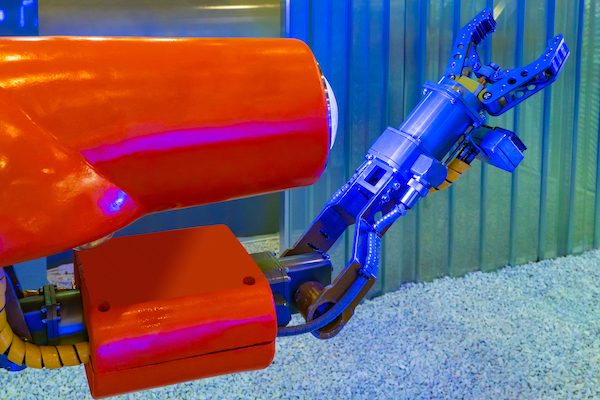The first ever automated underwater robot has now completed its first operation, diving down 500 meters and collecting a sample. The robot, named Nereid Under Ice (NEI), was development in partnership with The Woods Hole Oceanographic Institution (WHOI) and NASA’s Planetary Science and Technology from Analog Research (PSTAR) program.
About the size of a smart car, NUI weighs about 4000 pounds and last month collected samples from the Kolombo Volcano, an active underwater volcano near Greece. The bacteria covering the cratered floor will be used to study microbial life, helping to push science forward with new discoveries and uses. NASA sees this new technology as having the ability to automate new missions into outer space, particularly some of the moons in our solar system like Europa and Ganymede which have subsurface oceans to be explored.
An associate for WHIO mentioned that “For a vehicle to take a sample without a pilot driving it was a huge step forward. One of our goals was to toss out the joystick, and we were able to do just that.” Part of NUI’s artificial intelligence (AI) includes the ability to sample environments without the need for a pilot while also being able to choose the best spot to take samples from. The use of highly sophisticated software and custom cameras and lenses helps NUI’s system recognize the best and worst places to investigate and sample.
NUI’s automated technology was developed by a guest student from the University of Michigan and his single software command allowed the underwater machine to extend its arm and sample the seabed floor by sucking up some material in to its attached hose. The technology needed to explore other areas such as oceans on different moons within our solar system will need advanced technology and extensive sophistication in terms of AI, knowing this will lead to continued development of independent features without the need of a controller or pilot. The importance of future machines to think for themselves will be crucial to avoided hazards and providing quantifiable data to be returned and studied.
The ultimate goals is to have a group of these specialized machines working together. A spokesperson mentioned, “We can eventually see having a network of cognitive ocean robots where there’s a shared intelligence spanning an entire fleet, with each vehicle working cooperatively like bees in a hive, it will go well beyond losing the joystick.” NUI has been in development for years and has now traveled further under the ice than any vehicle previously with a max distance of 25 miles. It can send high definition video back to its team and is equipped with cameras and lenses as well as specialized sensors for identifying chemicals and biological material at a max depth of 6,500 feet.